Nameless Music
Musician Edward Schneider profiles the Tuesday Night experimental music series, a 10-year-old program that is finding new audiences and, just maybe, a permanent home at the Art of This gallery in Minneapolis.
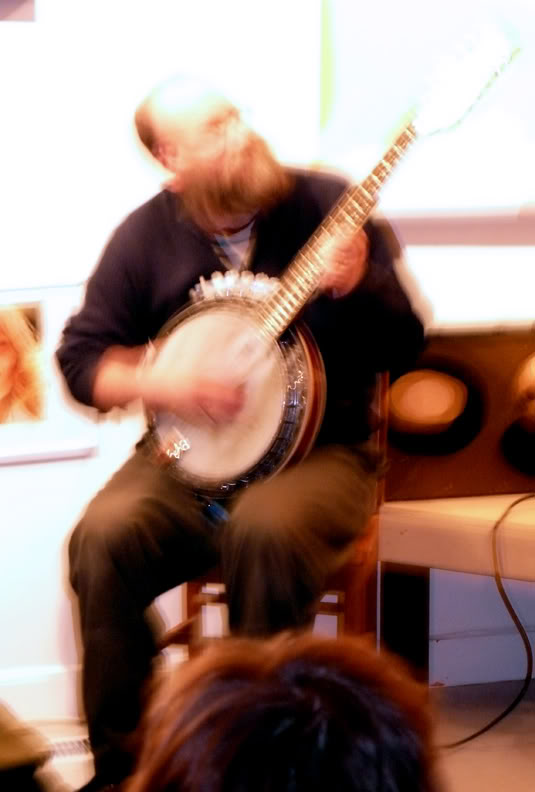
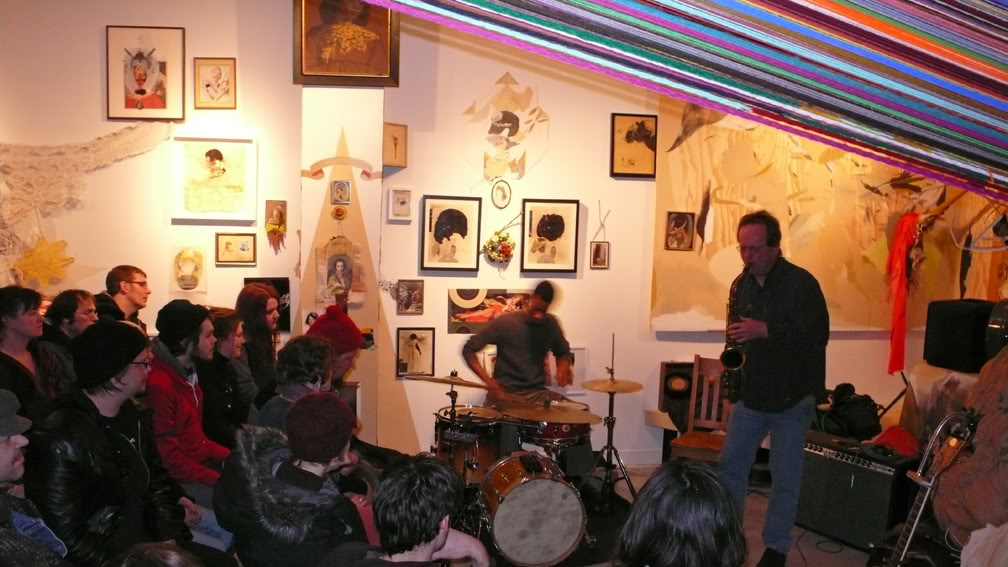
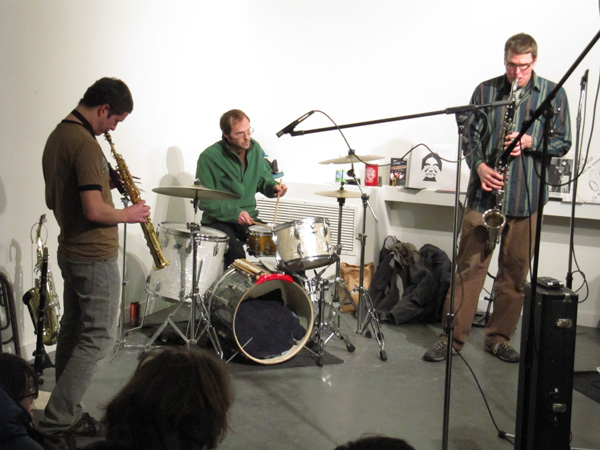
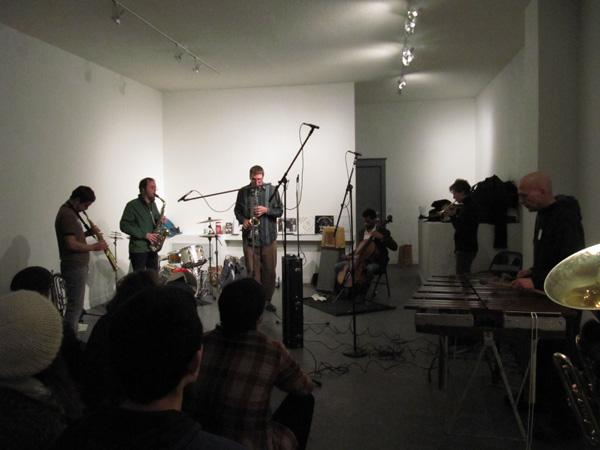
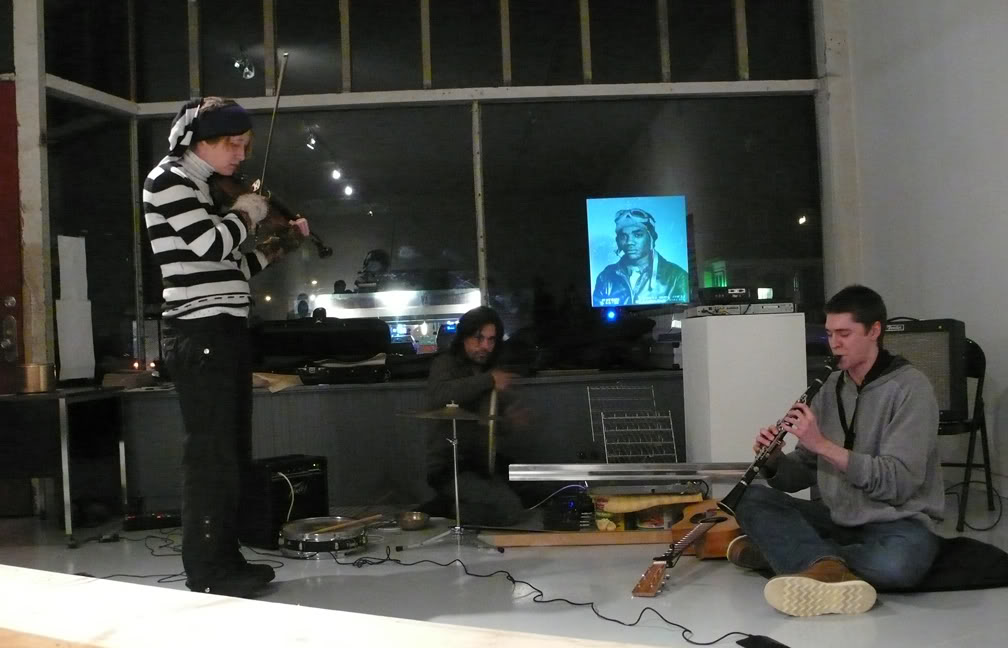
DEFINING WHAT TYPE OF MUSIC ONE MIGHT HEAR on a Tuesday night at Art of This Gallery can be just as challenging as predicting what sort of art will be part of the next exhibition. When asked to describe the performances, Casey Deming (Squid Fist), the curator of the Tuesday Series, shies away from traditional labels. He explains that there is a language gap that exists when talking about this music. “We simply don’t yet have terms to accurately describe the music people are making here. That is why I just call it the Tuesday Series.”
Since July of 2008, the Art of This Gallery (AOT), an alternative non-profit space in Minneapolis, has provided space for the Tuesday Series, which has evolved into an important meeting place for performers of experimental and improvised music in the Twin Cities for the past decade. During the last ten years, there have been three different venues and a number of individuals responsible for curating the musical performances; but through these changes, there has remained a consistent emphasis on creating an all-ages environment, out of the bar scene, where musicians are encouraged to take risks and explore new ideas. Bryce Beverlin II, who served as the series curator in 2007 when it lost its home at the Acadia Cafe, spoke with John W Marks (one of the directors of the AOT) about moving the Tuesday shows to their gallery. It turns out that John is himself a performer of experimental music, he agreed and the marriage of the contemporary art and music began.
When I ask Deming for a more precise accounting of what goes on in any given show in the series, he notes that performances usually involve some amount of improvisation and experimentation, and generally fall into three main categories: free jazz/acoustic instruments, electronics/built instruments, and those working with analogue instruments/sound collage. As an example, Deming specifically mentions free jazz musician, Milo Fine. Fine’s career spans several decades and includes collaborations with musical luminaries like Derek Bailey and Anthony Braxton. Among the instrument builders who play regularly, Deming says, is Paul Metzger, whose performances at AOT often include a modified banjo, to which he attached drone strings. In performances, Metzger often plays his banjo like a sitar, alternating between strumming the drone strings and playing notes on the fretboard. Other types of built instruments you might hear at the series revolve around circuit-bending, a creative short-circuiting of electronic devices to produce new sounds. For example, this summer Rafael Toral, a Portuguese sound artist, played new electronic instruments he created, including a small, hand-held Marshall amplifier, modified with a switch to open and close a feedback circuit, along with a voltage controlling potentiometer.
bryce beverlin II live improvisation november 25 2008 from brycebeverlinII on Vimeo.
On other Tuesday shows, musicians such as Andrew Broder, from the local indie band Fog, might step up to play. Broder creates sound collage using an electric guitar and a myriad of foot pedals. During performances he sits, strumming his guitar, while exploring how each adjustment of his foot pedals changes the mix of sounds. When I ask about his favorite performers, Deming says he’s been very impressed by the recent collaborations between percussionist Davu Seru and saxophonist George Cartwright. Deming also speaks highly of Bryce Beverlin II, Charles Gillett, and Jaron Childs as people who’ve earned his admiration, both for their musical chops and for their long commitment to the series.
The placement of an innovative music series within a contemporary art gallery allows for a compelling interaction between what are sometimes separate worlds. For example, Deming comments that, because the physical space of the gallery is constantly shifting as new exhibitions are installed, musicians often don’t have a sense of the performance space before they come for the night. They just show up and quickly decide for themselves how to divide the space: what part of the gallery is for the performers and what section will be given over to the audience. In the process, though, the artwork and the gallery space, themselves, become elements that the musicians interact with and respond to when performing. This cross-pollination between the music and visual art creates a fertile space for reflection, criticism, and exploration.
Deming also suggests that the shift for the Tuesday Series from a cafe to an art gallery may have changed the audience expectations. He observes that people coming in the door have been more open-minded, perhaps because they are coming to an art gallery, a place they’re used to being challenged. Deming also notes a certain merging of the art and music audiences, saying, “There are people who know about the series because of the gallery, and people who know about the gallery because of the series.” He goes on to suggest, “This new interaction has helped to foster collaborations that would not have been there otherwise.” There are also positive signs that the marriage of Art of This and the Tuesday Series are going to remain for a long time to come. Deming says that, over time, the series has become integral to the official programming at AOT — not just something that happens there. He also mentions the possibility for collaborative funding requests for which the gallery and series could join forces — something that would serve both the music series and the gallery, and which might further strengthen the program.
As the Tuesday Series celebrates a decade of experimental and improvised music, Deming is beginning to develop ways to document the important performances that take place. Sometime this winter, the series will launch its web presence, chronicling the last year-and-a-half of shows with listen-only mp3s for the majority of the sets played there.
All these plans bode well and suggest that the series may well be in a position to provide a home for experimental music for another ten years.
________________________________________________________
Related performance details:
The Tuesday Night series takes place at Art of This gallery semiregularly, always on Tuesday night. You’ll have two chances to catch Tuesday Night shows next month:
February 2: Kevin Cosgrove; Wendy Ultan / Dan Sutherland / Joseph Damman; Bryce Beverlin II
February 16: Adam J. Patterson, B.A.; Ostraka with Graham O’Brien; Ulottuvuus
Check in with the Art of This website frequently to keep track of individual performance times and participating musicians.
________________________________________________________
About the author: Edward Schneider is a composer, improviser, and educator living in the Twin Cities. His involvement in experimental music began at the University of Illinois, where he received a bachelor’s degree in music composition. Since moving to the Twin Cities, he has co-founded the quintet Process is the Goal and the Minneapolis Free Music Society. This spring, he was invited to speak and perform at the University of Minnesota as part of a free jazz workshop. His new electronic composition, the tree that was a bird, was performed in November as part of the Conny Purtill performance at the Blinky Palermo puppet theater, part of Nouveau Festival at the Pompidou in Paris.